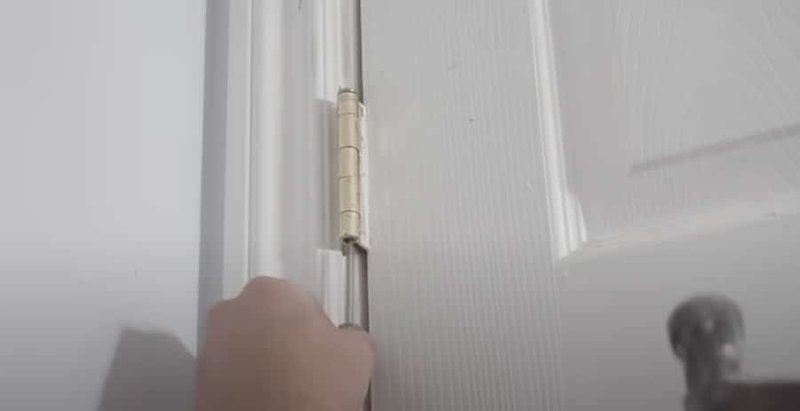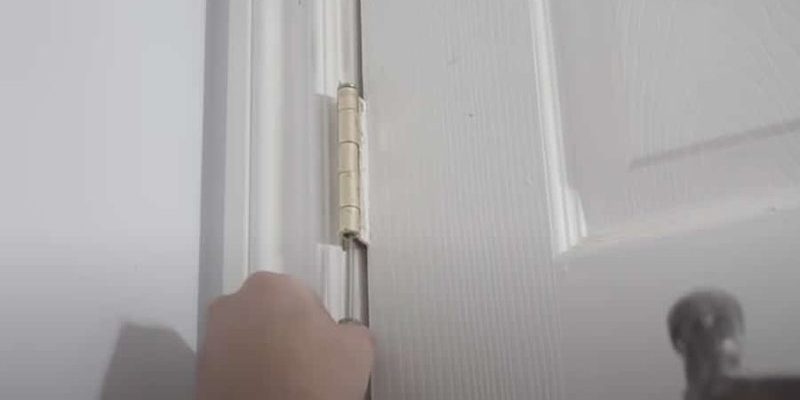
Let’s dive into the world of door latches, particularly the ones that seem to develop a mind of their own when the air gets a little too humid. Whether you have a traditional door latch or one of those sleek modern options, the core issue can often be the same. Humidity can wreak havoc, and I’m here to help you troubleshoot and fix it like a pro.
Understanding How Humidity Affects Door Latches
Humidity doesn’t just make the air feel sticky; it can also impact the materials around us, including wood and metal. When the humidity in the air increases, wood tends to absorb moisture, causing it to swell. If your door frame is made of wood, this swelling can cause the latch to stick, making it tough to open.
Metals can also react, albeit differently, as they might rust or corrode if not properly coated. A door latch that’s rusting or corroded can become sticky due to the build-up of grime and rust itself. So, next time you find yourself wrestling with a latch, remember that humidity is often the sneaky culprit behind this hassle.
Common Signs of a Sticking Door Latch
Identifying a sticking door latch isn’t rocket science. Here are some signs that might clue you in:
- Unusual Resistance: Does it feel like you’re pulling against a brick wall when you try to open the door?
- Misalignment: Sometimes, you may notice that the door doesn’t line up properly with the frame.
- Scratching Sounds: If you hear a scraping noise as you turn the handle, that’s a clear sign something’s wrong.
- Visible Damage: Look for signs of rust or swelling around the latch area.
These signs can help you diagnose the problem early on—keeping you from being late to that all-important meeting or dinner date.
Checking the Door Frame and Latch Alignment
When troubleshooting a sticking door latch, the first step is to check the alignment. A door that isn’t properly aligned can create tension on the latch, causing it to stick. Here’s how to test it:
1. Visual Inspection: Look closely at the gap between the door and the frame. Is it even all around? If not, that’s your first clue.
2. Twist Test: Gently twist the door handle. If the latch doesn’t fully retract or feels stuck at an angle, it’s likely misaligned.
3. Use a Level: If you want to get technical, you can use a level tool to see if your door is hanging straight. If it’s not, you might need to adjust the hinges.
Adjusting the hinges or the latch plate might seem daunting, but it’s a straightforward process. After making adjustments, try opening and closing the door again to see if it’s easier to operate.
Lubrication: The Quick Fix for Sticking Latches
Sometimes, all your door latch needs is a little love in the form of lubrication. Think of it like giving it a spa day. A well-lubricated latch can move freely and reduce the sticking sensation you’ve been battling. Here’s how to do it:
1. Choose the Right Lubricant: Look for a silicone-based lubricant or graphite powder. Avoid oil-based products, as they can attract dirt over time.
2. Application: Apply a small amount of lubricant directly to the latch mechanism. Operate the latch a few times to work it in.
3. Wipe Away Excess: Use a clean cloth to remove any excess lubricant, which helps keep your door clean.
Regular maintenance this way can prevent future stickiness and keep your door functioning smoothly—even in humid conditions.
Inspecting the Latch Mechanism for Damage
If lubrication didn’t help, it’s time to check the latch mechanism itself. Even a small amount of rust or dirt can lead to major problems. Here’s what to look for:
– Visual Damage: Inspect the latch for signs of rust or corrosion. If it looks rough or has noticeable wear, it might be time for a replacement.
– Functionality Test: Remove the latch and manually test its operation. Does it move freely? If it feels sticky or resistant, it may need replacing.
– Debris Check: Sometimes, tiny pieces of dirt or debris can get lodged in the latch. A quick cleaning can work wonders.
If you determine that your latch is damaged beyond repair, consider visiting your local hardware store for a replacement.
Preventing Future Sticking Issues
Now that you’ve conquered your sticking latch, how do you keep it from coming back? Prevention is key. Here are a few tips:
– Control Humidity: Use a dehumidifier in areas of your home that tend to get humid. Keeping the air dry can help the materials stay stable.
– Regular Maintenance: Make it part of your routine to check and lubricate your door latches every few months.
– Weatherstripping: Installing weatherstripping around your door can help reduce moisture infiltration, keeping both your door and latch happy.
Taking these small steps can save you a lot of hassle in the future.
When to Call a Professional
If you’ve tried everything and your latch is still giving you trouble, it might be time to consult a professional. Sometimes the issue can be more complex, like a problem with the door frame or structural damage. Don’t hesitate to call someone with expertise.
Getting your door, and its latch, in working order is worth it to avoid the stress of a sticking door, especially when you’re in a hurry.
In summary, troubleshooting a door latch that sticks can often come down to understanding how humidity affects it, checking alignment, lubricating where needed, and keeping up with maintenance. With these steps, you’re well on your way to ensuring that your door latch works smoothly—and you can get through that door without a hitch!
